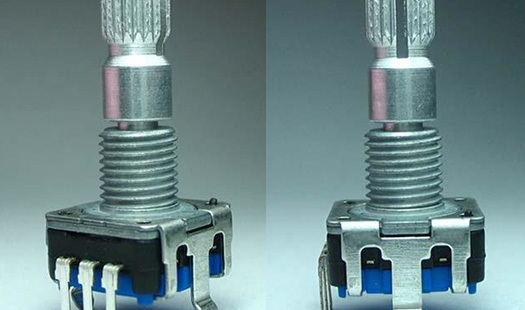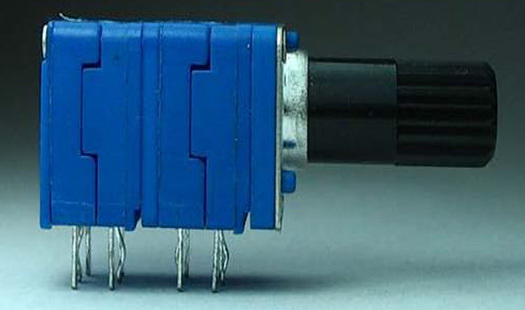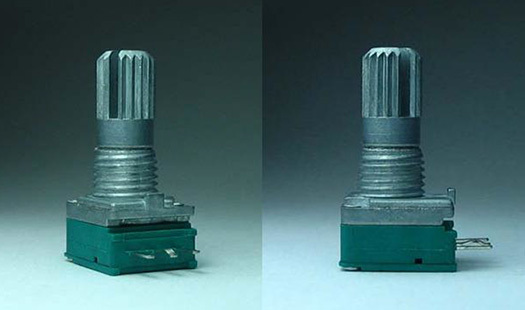Unlock Precision Control with the Best 50k Potentiometer for Your Electronic Projects
Oct 11,2025
Unlock Precision Control with the Best 50k Potentiometer for Your Electronic Projects
Table of Contents
- What is a Potentiometer?
- Understanding 50k Potentiometers
- Types of Potentiometers and Their Uses
- Key Features of the Best 50k Potentiometer
- Selecting the Right 50k Potentiometer for Your Needs
- Installation and Wiring Tips
- Troubleshooting Common Issues with 50k Potentiometers
- Frequently Asked Questions
What is a Potentiometer?
A potentiometer, often referred to as a "pot," is a three-terminal resistor with a sliding or rotating contact that forms an adjustable voltage divider. In essence, it allows for precise control of electrical signals. Potentiometers are widely utilized in various applications, including audio equipment, consumer electronics, and industrial machinery.
Understanding 50k Potentiometers
Among the various types of potentiometers, the **50k potentiometer** stands out for its balance of resistance and versatility. With a resistance value of 50,000 ohms, these components are particularly suitable for applications that require moderate to high impedance. They are frequently used in audio mixing consoles and as voltage dividers in circuits.
The Importance of Resistance Value
The resistance value of a potentiometer impacts its functionality in a circuit. A **50k potentiometer** is ideal for maintaining audio fidelity while allowing for smooth volume adjustments. Its resistance ensures that the overall impedance of the circuit remains manageable, preventing signal degradation.
Types of Potentiometers and Their Uses
Potentiometers are categorized based on their construction and operation. Here are the most common types you’ll encounter:
1. Linear Potentiometers
Linear potentiometers provide a straight-line response in their adjustment range, meaning the output voltage varies linearly with the position of the wiper. These are commonly used in applications requiring precise adjustments, such as volume controls in audio devices.
2. Rotary Potentiometers
Rotary potentiometers offer a circular adjustment mechanism. These are widely used in consumer electronics, such as radios and amplifiers, allowing users to increase or decrease volume effectively.
3. Digital Potentiometers
Digital potentiometers operate electronically and can be controlled by microcontrollers. They are perfect for applications requiring automation, such as in robotics and digital audio processing.
4. Trimming Potentiometers
Trimming potentiometers are used for fine-tuning circuit parameters. They are typically small and used in calibration processes, ensuring that devices operate within specified limits.
Key Features of the Best 50k Potentiometer
When selecting the best **50k potentiometer**, several features should be taken into account:
1. Taper Type
The taper of a potentiometer affects how the resistance changes as you turn the knob. **Audio taper** potentiometers are designed to match human hearing, allowing for more intuitive volume control, while **linear taper** pots provide a consistent change in resistance.
2. Power Rating
The power rating indicates how much current the potentiometer can handle without overheating. It is crucial to choose a potentiometer with an appropriate power rating for your application to prevent damage.
3. Physical Size and Mounting Style
Consider the physical dimensions and mounting style of the potentiometer, whether it’s through-hole or surface-mounted. Ensure it fits within your circuit design and can be easily integrated.
4. Quality and Durability
Invest in high-quality potentiometers that are built to last, especially for applications subject to wear and tear. Look for components made from robust materials to ensure longevity.
Selecting the Right 50k Potentiometer for Your Needs
Choosing the right **50k potentiometer** involves understanding your specific requirements. Begin by assessing the function you need the potentiometer to serve, whether it’s for audio control, signal processing, or calibration tasks. Next, consider the following factors:
1. Application Type
Different applications may require different types of potentiometers. For instance, if you are designing an audio device, opt for an audio taper potentiometer. For signal processing, a linear taper may be more appropriate.
2. Environmental Conditions
Consider the environmental conditions the potentiometer will be exposed to, such as temperature, humidity, and potential exposure to contaminants. Choose a potentiometer that can withstand these conditions.
3. Budget
While quality is essential, it’s also crucial to stay within your budget. Research various brands and models to find a potentiometer that offers the best performance for the price.
Installation and Wiring Tips
Installing a **50k potentiometer** requires careful attention to detail to ensure optimal performance. Here are some installation tips:
1. Proper Orientation
Ensure that the potentiometer is oriented correctly in the circuit. Consult the datasheet for pin configurations to avoid wiring mistakes.
2. Soldering Techniques
When soldering, use the appropriate heat settings to avoid damaging the component. Ensure that solder joints are clean and solid to prevent connectivity issues.
3. Testing and Calibration
After installation, test the potentiometer to ensure it functions as intended. Adjust the circuit as necessary for optimal performance, especially in audio applications.
Troubleshooting Common Issues with 50k Potentiometers
Even high-quality potentiometers can experience issues. Here are some common problems and how to address them:
1. Volume Drop or Cut-Outs
If you experience sudden volume drops or cut-outs, it may be due to dirt or dust on the contacts. Cleaning the potentiometer may resolve the issue.
2. Loose Connections
Check for loose connections, as these can lead to inconsistent performance. Re-solder any loose wires to ensure a solid connection.
3. Mechanical Wear
If the potentiometer feels stiff or unresponsive, mechanical wear might be the cause. In such cases, replacing the component is often necessary.
Frequently Asked Questions
1. What is the difference between linear and audio taper potentiometers?
Linear taper potentiometers provide a consistent change in resistance, while audio taper potentiometers adjust resistance logarithmically to match human hearing sensitivity.
2. Can I use a 50k potentiometer in place of a different resistance value?
While you can substitute potentiometers of different resistance values, doing so may alter circuit performance. It’s essential to ensure the replacement meets the circuit’s requirements.
3. How do I know if my potentiometer is faulty?
Signs of a faulty potentiometer include erratic behavior, unusual noises, or inconsistent output. Testing with a multimeter can help confirm its functionality.
4. Are there any specific brands recommended for 50k potentiometers?
Several reputable brands manufacture 50k potentiometers, including Bourns, Vishay, and Alpha. Research and reviews can guide you toward reliable options for your needs.
5. Can I use a potentiometer in digital circuits?
Yes, digital potentiometers are available and can be used in digital applications. They are controlled by microcontrollers and offer advanced features for automation.
Conclusion
In summary, selecting the best **50k potentiometer** for your electronic projects is essential for achieving precision control and optimal performance. By understanding the types, features, and installation techniques, you can make informed decisions that enhance your projects. Whether you’re working on audio equipment, signal processing, or calibration tasks, a high-quality potentiometer can significantly impact your success. For anyone involved in electronics, investing in a reliable **50k potentiometer** is a step towards unlocking the full potential of your designs.
More Information
More Information
RECOMMENDED










